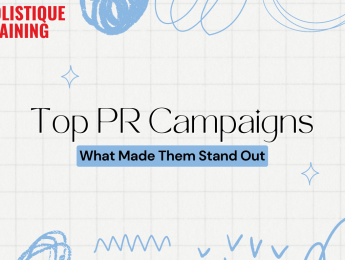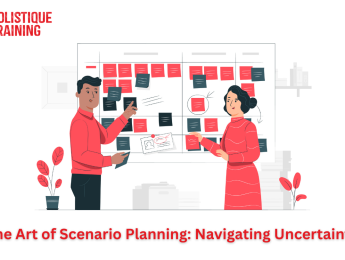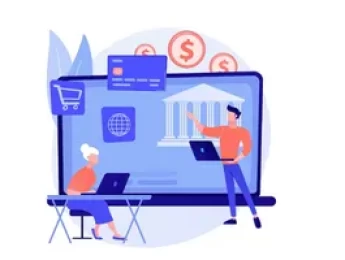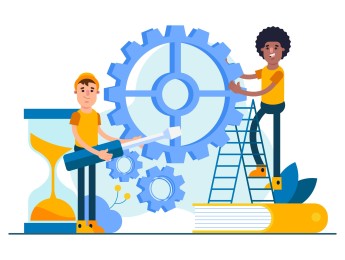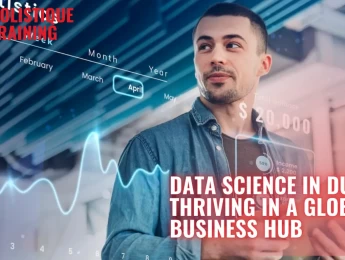Introduction
In 2024, public relations has become more crucial than ever as brands navigate an increasingly complex media landscape and an informed, discerning public. Effective PR campaigns play a pivotal role in shaping brand identity, building trust, and engaging with diverse audiences across digital and traditional platforms. With the rapid evolution of technology and shifting consumer expectations, PR strategies must be innovative, authentic, and adaptable to achieve success and maintain a positive brand reputation in this dynamic environment.
Criteria for Selecting the Best PR Campaigns
Selecting the best PR campaigns requires a multifaceted approach, considering various criteria that collectively determine a campaign's success and impact. At the forefront are metrics for success, which include reach, engagement, and return on investment (ROI). These metrics provide quantitative insights into how well the campaign resonated with the target audience, how effectively it drove interaction and participation, and the financial or strategic value it delivered to the brand. A campaign with broad reach, high engagement rates, and a significant ROI is often considered successful from a performance standpoint. However, beyond these tangible metrics, innovation and creativity play a crucial role in distinguishing exceptional PR campaigns. The ability to craft unique, compelling narratives that capture attention and stand out in a crowded media landscape is essential. Creative approaches that challenge conventional thinking or introduce novel elements often lead to higher audience engagement and stronger brand recall.
Equally important is the alignment with brand values. A successful PR campaign must authentically represent the brand's identity and core principles. When a campaign is deeply rooted in what the brand stands for, it builds trust and credibility with the audience, making the message more powerful and lasting. Additionally, the campaign’s audience impact and cultural relevance are vital considerations. A campaign that resonates with current social, cultural, or political trends and addresses the needs and concerns of the audience is likely to achieve greater relevance and emotional connection. This relevance can significantly amplify a campaign’s effectiveness, leading to deeper audience engagement and more profound, long-lasting impacts.
- Metrics for Success:
- Reach
- Engagement
- Return on Investment (ROI)
- Innovation and Creativity:
- Unique narratives
- Compelling storytelling
- Novel elements that stand out
- Alignment with Brand Values:
- Authentic representation of brand identity
- Building trust and credibility
- Audience Impact and Cultural Relevance:
- Resonance with social, cultural, or political trends
- Addressing audience needs and concerns
Table: Criteria for Selecting the Best PR Campaigns
Criteria | Description | Key Factors |
Metrics for Success | Quantitative measures of campaign performance. | - Reach: Audience size and exposure. - Engagement: Interaction levels. - ROI: Financial or strategic value. |
Innovation and Creativity | The uniqueness and originality of the campaign. | - Unique narratives. - Compelling storytelling. - Novel elements that stand out. |
Alignment with Brand Values | Authentic representation of brand identity. | - Authenticity. - Building trust and credibility. |
Audience Impact and Cultural Relevance | Resonance with social and cultural trends. | - Resonance with current trends. - Addressing audience needs and concerns. |
By evaluating PR campaigns through these lenses, brands can identify which strategies not only performed well but also contributed to long-term brand equity and audience loyalty.
Top PR Campaigns of 2024
Campaign 1: Patagonia’s “Rewilding the World”
- Overview: In 2024, Patagonia launched its “Rewilding the World” campaign to raise awareness about the importance of restoring wild ecosystems. This global initiative was designed to engage communities, policymakers, and consumers in actions that support rewilding efforts, such as reforestation and species reintroduction.
- Key Strategies Employed: Patagonia employed a mix of high-impact digital storytelling, influencer partnerships, and grassroots activism. The campaign featured a series of short films highlighting rewilding projects across the globe, and partnered with environmental influencers to amplify the message. They also organized local events where consumers could participate in rewilding activities, directly connecting them to the cause.
- Audience Response and Results: The campaign resonated deeply with Patagonia’s eco-conscious audience. It achieved over 20 million video views across platforms, with significant engagement in the form of social shares and comments. The campaign also resulted in a 15% increase in sales of their eco-friendly product lines, with Patagonia donating a portion of profits to rewilding projects.
- Lessons Learned: Patagonia’s success demonstrated the power of aligning brand values with actionable campaigns. The integration of compelling storytelling with on-the-ground activism provided a holistic approach that not only raised awareness but also drove consumer action and loyalty.
Campaign 2: Nike’s “Equality for All Athletes”
- Overview: Nike’s “Equality for All Athletes” campaign aimed to tackle the issues of inequality in sports by promoting equal opportunities and recognition for athletes of all backgrounds. The campaign was a direct response to ongoing social justice movements and the increasing demand for brands to take a stand on such issues.
- Key Strategies Employed: Nike launched a series of powerful ads featuring athletes from diverse backgrounds, sharing their stories of overcoming barriers in the sports world. The campaign was supported by a strong social media presence, including the use of hashtags like #EqualityForAll. Additionally, Nike collaborated with various non-profits to fund scholarships and sports programs for underrepresented communities.
- Audience Response and Results: The campaign garnered widespread acclaim for its bold stance and emotional storytelling. It led to a significant increase in brand engagement, with the #EqualityForAll hashtag being used over 5 million times within the first month. The campaign also strengthened Nike’s brand loyalty among younger, socially conscious consumers, contributing to a 10% increase in quarterly sales.
- Lessons Learned: Nike’s campaign underscored the importance of authenticity when addressing social issues. By directly linking the campaign to actionable change, Nike not only enhanced its brand image but also contributed to a larger societal impact, resonating strongly with its audience.
Campaign 3: Coca-Cola’s “Share a Memory”
- Overview: In 2024, Coca-Cola launched the “Share a Memory” campaign, focusing on the emotional connection people have with the brand. The campaign encouraged consumers to share their favorite memories involving Coca-Cola, aiming to reinforce the brand’s association with joyful moments.
- Key Strategies Employed: Coca-Cola utilized a user-generated content (UGC) strategy, inviting consumers to share photos and stories on social media with the hashtag #ShareAMemory. The campaign also featured nostalgic commercials that highlighted Coca-Cola’s role in memorable life events. Additionally, special edition bottles with customizable labels allowed consumers to create personalized messages.
- Audience Response and Results: The campaign was a massive success, generating millions of user-generated posts and significantly boosting engagement on social media. The hashtag #ShareAMemory trended worldwide, and Coca-Cola saw a 12% increase in brand sentiment. The personalized bottles became a hit, leading to a notable increase in sales during the campaign period.
- Lessons Learned: Coca-Cola’s campaign illustrated the power of nostalgia and consumer participation. By tapping into personal memories and offering customizable products, the brand was able to create a highly engaging and emotionally resonant campaign that drove both engagement and sales.
Campaign 4: Apple’s “Green Loop” Initiative
- Overview: Apple’s “Green Loop” initiative was a major 2024 campaign aimed at promoting sustainability and circular economy practices. The campaign focused on Apple’s efforts to reduce electronic waste by encouraging consumers to trade in old devices for recycling or refurbishing.
- Key Strategies Employed: Apple launched the “Green Loop” with a series of sleek, visually compelling ads across digital platforms. The campaign was supported by in-store promotions where customers could learn about recycling and trade-in options. Apple also partnered with environmental organizations to ensure that the recycled materials were used to produce new products, closing the loop on electronic waste.
- Audience Response and Results: The campaign received widespread praise for its commitment to sustainability. It resulted in a 30% increase in trade-ins compared to the previous year and significantly reduced the environmental footprint of Apple’s product lifecycle. The campaign also strengthened Apple’s brand reputation as a leader in corporate environmental responsibility.
- Lessons Learned: Apple’s “Green Loop” demonstrated the effectiveness of combining environmental responsibility with consumer incentives. The campaign not only advanced Apple’s sustainability goals but also enhanced customer loyalty by offering tangible benefits for environmentally conscious behavior.
Campaign 5: Airbnb’s “Stay for Good”
- Overview: Airbnb’s “Stay for Good” campaign in 2024 aimed to highlight the positive impact of travel on local communities. The campaign focused on promoting stays in eco-friendly and socially responsible accommodations that support local economies and culture.
- Key Strategies Employed: Airbnb created a dedicated platform within its app showcasing “Stay for Good” properties, which met specific criteria for environmental sustainability and social impact. The campaign also featured stories from hosts who contribute to their communities, shared through a mix of video content and blog posts. To engage travelers, Airbnb offered discounts for bookings at these properties and collaborated with travel influencers to spread the word.
- Audience Response and Results: The campaign successfully positioned Airbnb as a socially responsible travel option. It led to a 25% increase in bookings for “Stay for Good” properties and garnered positive media coverage for its focus on sustainable tourism. The campaign also increased awareness of responsible travel practices among Airbnb’s global customer base.
- Lessons Learned: Airbnb’s “Stay for Good” highlighted the growing consumer demand for ethical and sustainable travel options. The campaign showed that by aligning business objectives with social and environmental values, companies can drive both positive impact and business growth.
Analysis of Trends in 2024 PR Campaigns
The Rise of Digital-First Strategies
In 2024, PR campaigns increasingly adopted digital-first strategies, recognizing the dominance of online platforms in reaching and engaging audiences. The shift towards digital was driven by the need for real-time interaction, data-driven insights, and the ability to reach a global audience instantly. Campaigns that prioritized digital channels—such as social media, email marketing, and online video content—saw higher engagement rates and more immediate feedback loops. These strategies allowed brands to tailor their messages, track performance metrics, and adjust tactics on the fly, making them more agile and responsive to audience needs. Additionally, the rise of digital platforms facilitated the use of interactive content, such as live streams, polls, and virtual events, which further enhanced audience participation and brand connection.
The Importance of Authenticity and Transparency
Authenticity and transparency emerged as critical factors in the success of PR campaigns in 2024. As consumers became more skeptical of corporate messaging, they gravitated towards brands that demonstrated genuine commitment to their values and were transparent about their operations. Successful campaigns were those that openly communicated their intentions, admitted any shortcomings, and showed a willingness to engage in honest dialogue with their audiences. This trend underscored the growing demand for brands to build trust by being forthright and consistent in their messaging. Campaigns that incorporated user-generated content, real customer testimonials, or behind-the-scenes insights were particularly effective in fostering authenticity.
Integrating Social Issues and Brand Purpose
In 2024, the integration of social issues with brand purpose became a defining characteristic of many successful PR campaigns. Brands increasingly aligned their messaging with broader societal concerns, such as environmental sustainability, social justice, and mental health. This alignment was not just a marketing tactic but a reflection of a deeper commitment to contributing positively to society. Campaigns that effectively integrated social issues were those that took a stand on relevant topics, partnered with non-profits or advocacy groups, and provided tangible support for the causes they championed. By doing so, these brands were able to connect with consumers on a more meaningful level, driving both brand loyalty and social impact.
The Role of Influencers and Content Creators
Influencers and content creators continued to play a pivotal role in PR campaigns in 2024. With their ability to reach niche audiences and create authentic, relatable content, influencers became key partners for brands looking to amplify their messages. Successful campaigns leveraged influencers not just as promoters but as co-creators, collaborating on content that resonated with their followers while aligning with the brand’s objectives. The use of micro-influencers, who often have smaller but highly engaged audiences, became particularly popular, allowing brands to tap into specific communities with tailored messages. Additionally, the rise of platforms like TikTok and Instagram Reels further emphasized the importance of short-form, visually engaging content created by influencers, which proved effective in capturing audience attention and driving engagement.
By analyzing these trends, it’s clear that the PR landscape in 2024 was shaped by a blend of digital innovation, a focus on authenticity, a commitment to social responsibility, and the strategic use of influencer partnerships. Brands that successfully navigated these trends were able to create campaigns that not only achieved their objectives but also resonated deeply with their audiences, setting a new standard for public relations in the digital age.
Why Were These PR Campaigns Successful?
Understanding Audience Needs and Preferences
One of the primary reasons these PR campaigns were successful in 2024 was their deep understanding of audience needs and preferences. The most effective campaigns invested heavily in research to identify the values, interests, and concerns of their target audiences. This insight allowed brands to tailor their messaging in ways that resonated on a personal level. Whether it was through personalized content, addressing specific pain points, or speaking to the cultural zeitgeist, these campaigns connected with audiences by reflecting their desires and aspirations. By focusing on what truly mattered to their consumers, brands were able to create more meaningful and impactful communications, leading to higher engagement and loyalty.
Leveraging Data and Analytics for Decision Making
Another key factor behind the success of these PR campaigns was the strategic use of data and analytics. In 2024, data-driven decision-making became a cornerstone of PR strategy, enabling brands to refine their campaigns based on real-time insights. Successful campaigns used analytics to track performance metrics such as engagement rates, sentiment analysis, and conversion rates. This data allowed brands to quickly identify what was working and what wasn’t, enabling them to make informed adjustments to optimize outcomes. The ability to measure ROI and other key indicators in real-time also helped brands justify their PR investments and demonstrate the value of their campaigns to stakeholders.
Effective Storytelling and Message Framing
Effective storytelling and message framing were central to the success of these PR campaigns. In a crowded media landscape, the ability to tell a compelling story that captures attention and evokes emotion is crucial. The best campaigns in 2024 utilized storytelling techniques that not only highlighted the brand’s message but also connected with audiences on a deeper emotional level. Whether through narrative-driven video content, powerful testimonials, or immersive brand experiences, these campaigns were able to convey their messages in ways that were memorable and impactful. Additionally, the framing of these messages—how they were presented in terms of tone, context, and relevance—played a critical role in ensuring they resonated with the intended audience.
Adaptive Strategies in a Rapidly Changing Landscape
The ability to adapt quickly in a rapidly changing landscape was another hallmark of successful PR campaigns in 2024. The media and cultural environment is more dynamic than ever, with trends, news cycles, and consumer behaviors shifting at unprecedented speeds. The most effective campaigns were those that remained flexible and responsive, allowing them to pivot strategies as needed. Whether it was adapting to a sudden change in public sentiment, capitalizing on a viral moment, or navigating unforeseen challenges, these campaigns thrived by staying nimble and proactive. This adaptability not only kept the campaigns relevant but also allowed them to maintain momentum and achieve their objectives despite an ever-changing landscape.
By mastering these elements—understanding audience needs, leveraging data, telling compelling stories, and remaining adaptable—these PR campaigns were able to achieve significant success in 2024. Their ability to connect with audiences, drive engagement, and deliver measurable results highlights the evolving nature of public relations in an increasingly complex and competitive media environment.
Summary Table of Top PR Campaigns of 2024
Campaign | Overview | Key Strategies | Results | Lessons Learned |
Patagonia’s “Rewilding the World” | Promoted rewilding efforts globally. | Digital storytelling, influencers, local events. | 20M+ views, 15% sales increase. | Aligning values with actions enhances loyalty. |
Nike’s “Equality for All Athletes” | Advocated for equality in sports. | Diverse athlete ads, social media, non-profit partnerships. | 5M+ hashtag uses, 10% sales increase. | Authenticity and action on social issues boost impact. |
Coca-Cola’s “Share a Memory” | Encouraged sharing personal memories with Coca-Cola. | User-generated content, nostalgic ads, customizable bottles. | Trending hashtag, 12% increase in sentiment and sales. | Nostalgia and participation drive engagement. |
Apple’s “Green Loop” Initiative | Promoted recycling and sustainability. | Digital ads, in-store promotions, partnerships. | 30% increase in trade-ins, reduced footprint. | Environmental responsibility enhances loyalty. |
Airbnb’s “Stay for Good” | Highlighted eco-friendly and socially responsible stays. | Platform for sustainable properties, influencer collaborations. | 25% increase in bookings, positive media. | Aligning with social values drives growth. |
Key Takeaways for Future PR Campaigns
Strategies to Emulate
To craft successful PR campaigns in the future, there are several strategies from 2024’s standout campaigns that should be emulated. First, prioritize a deep understanding of your audience. Research and data are invaluable tools for uncovering the preferences, values, and behaviors of your target market, enabling you to create messaging that truly resonates. Additionally, the integration of digital-first approaches should be considered essential. Utilizing social media, influencer collaborations, and interactive content can greatly enhance your campaign’s reach and engagement. Moreover, authentic storytelling remains a powerful tool. Campaigns that tell compelling stories—rooted in real experiences, emotions, and cultural relevance—are more likely to leave a lasting impact on their audience.
Another strategy to emulate is the proactive use of data and analytics. Real-time monitoring and analysis allow for agile decision-making and optimization, ensuring that your campaign remains effective throughout its run. Finally, incorporating social issues and brand purpose into your campaign can create deeper connections with your audience. Aligning your brand with meaningful causes not only enhances your brand’s image but also fosters loyalty among consumers who share similar values.
Potential Pitfalls to Avoid
While there are many successful strategies to adopt, there are also common pitfalls to avoid in future PR campaigns. One major pitfall is failing to adapt to changing circumstances. The fast-paced nature of today’s media landscape demands flexibility and responsiveness. A campaign that cannot pivot in response to new developments or feedback is at risk of becoming irrelevant. Another pitfall is neglecting authenticity. Audiences today are quick to detect insincerity, and any perceived dishonesty can damage your brand’s reputation. Avoid overpromising or presenting a false image, as this can lead to a backlash.
Additionally, relying too heavily on traditional methods without integrating innovative approaches can stifle your campaign’s potential. The media landscape is continuously evolving, and campaigns that fail to leverage new technologies and platforms may struggle to capture attention. Lastly, ignoring the importance of clear and consistent messaging can dilute your campaign’s effectiveness. Mixed messages can confuse your audience and weaken your campaign’s impact.
How to Innovate in Your Next PR Campaign
Innovation is key to standing out in an increasingly crowded PR landscape. To innovate in your next PR campaign, consider experimenting with emerging technologies and platforms. For instance, augmented reality (AR) and virtual reality (VR) offer immersive experiences that can engage audiences in unique and memorable ways. Additionally, explore new forms of content, such as podcasts, short-form videos, and interactive web experiences, which cater to the evolving preferences of modern consumers.
Furthermore, think about how you can creatively integrate your brand’s purpose into your campaign. Rather than simply aligning with a cause, consider how your campaign can actively contribute to social change, such as by launching initiatives that address pressing issues or by partnering with non-profit organizations to amplify their efforts. Another way to innovate is by leveraging data not just for measurement but for predictive analysis. Using AI and machine learning, you can anticipate audience behaviors and trends, allowing you to craft highly targeted and personalized campaigns.
Finally, consider the power of collaboration. Partnering with influencers, content creators, and even other brands can bring fresh perspectives and broaden your campaign’s reach. By embracing creativity, technology, and social responsibility, you can push the boundaries of what a PR campaign can achieve, ensuring that your message not only reaches but also resonates with your audience.
Conclusion
In conclusion, the PR campaigns of 2024 have demonstrated the importance of understanding audience needs, leveraging data for informed decision-making, and embracing authenticity in storytelling. These campaigns have set new benchmarks by integrating digital-first strategies, aligning with social issues, and remaining adaptable in a rapidly changing landscape. As we look toward 2025 and beyond, the future of PR campaigns will likely be shaped by continued innovation, with an increased focus on immersive technologies, personalized content, and genuine brand transparency. Brands that stay ahead of these trends and maintain a strong connection with their audiences will be best positioned for success in the evolving world of public relations.


